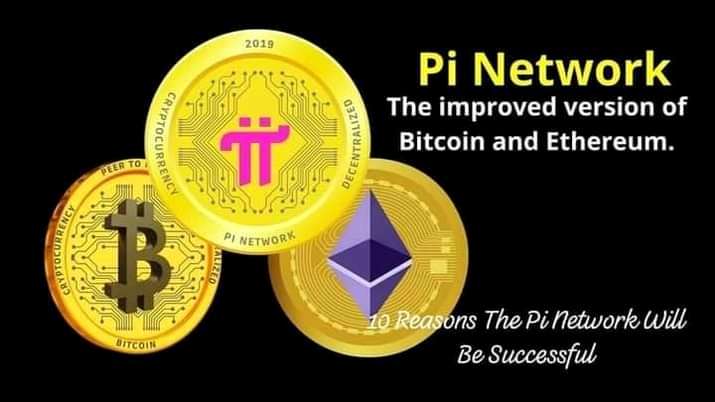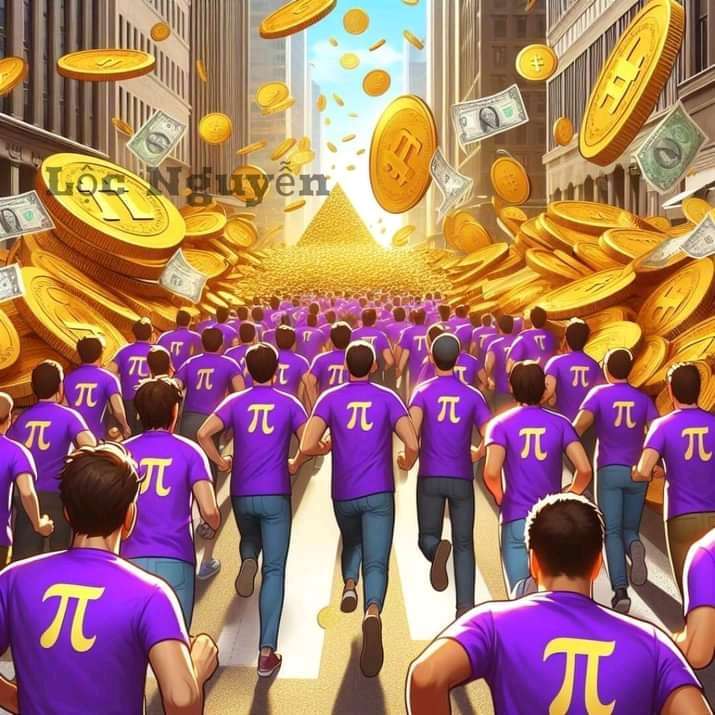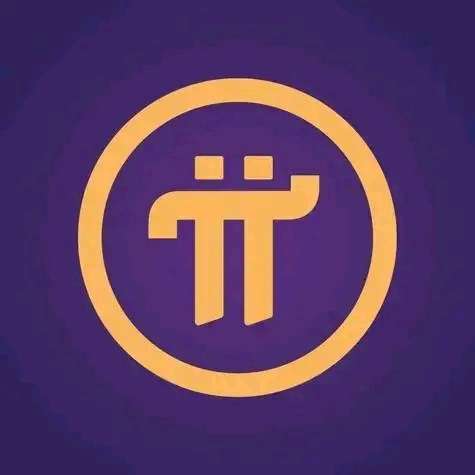The Power and Mystery of Pi (π)

When it comes to fascinating numbers, few can rival Pi (π). A mathematical constant with a legacy stretching back thousands of years, Pi captures the imagination of mathematicians, scientists, and enthusiasts alike. But what exactly is Pi, and why does it hold such a significant place in both mathematics and popular culture?
What is Pi?


Pi is the ratio of a circle’s circumference to its diameter. This ratio is constant for all circles, regardless of their size. Represented by the Greek letter π, its approximate value is 3.14159, but this is just the beginning. Pi is an irrational number, meaning it cannot be exactly expressed as a simple fraction, and its decimal representation goes on forever without repeating.
A Journey Through History
The quest to understand Pi dates back to ancient civilizations. The Egyptians and Babylonians had early approximations, and the Greek mathematician Archimedes is famous for developing a method to calculate Pi with remarkable accuracy for his time. Over the centuries, mathematicians have employed increasingly sophisticated techniques to compute Pi to millions, and now trillions, of digits.
Pi in Mathematics
In mathematics, Pi is ubiquitous. It appears in formulas involving circles and spheres, such as the area of a circle (πr²) and the volume of a sphere (4/3πr³). Beyond geometry, Pi shows up in calculus, trigonometry, and even in the complex numbers domain through Euler’s identity: e^(iπ) + 1 = 0, a beautiful equation linking five of the most important numbers in mathematics.
Pi in Science and Engineering
Pi’s applications extend far beyond the realm of pure mathematics. Engineers use Pi in designing anything involving circular shapes, from wheels to gears. In physics, Pi appears in formulas describing waves, quantum mechanics, and general relativity. Even in everyday technology, such as GPS systems and signal processing, Pi plays a crucial role.
Cultural Impact

Pi has seeped into popular culture in various ways. Every year on March 14th (3/14), enthusiasts celebrate Pi Day with activities ranging from pie-eating contests to reciting Pi’s digits. The number has inspired countless books, movies, and even music. This blend of mathematics and culture highlights Pi’s unique status as a symbol of intellectual curiosity and human creativity.
The Infinite Quest
One of the most captivating aspects of Pi is its infinite nature. Despite advances in computation, Pi’s exact value remains elusive. Mathematicians and computer scientists continue to push the boundaries, calculating more and more digits. This pursuit isn’t just about breaking records; it helps test the limits of computational methods and the efficiency of algorithms.
Why Pi Matters
Pi is more than just a number; it’s a testament to the beauty and complexity of mathematics. It challenges us to think deeply about the nature of infinity and the precision of our measurements. Pi embodies the idea that within the abstract world of numbers, we can find patterns and relationships that have profound implications for our understanding of the universe.
Conclusion
The story of Pi is a journey through time, across cultures, and into the depths of mathematical theory. Whether you’re a mathematician, a scientist, or simply someone who enjoys the elegance of numbers, Pi offers endless opportunities for exploration and wonder. So next time you see a circle, remember the incredible number that makes it possible: Pi.
Currently, Bitcoin (BTC) is significantly higher in value compared to Pi Network’s PI coin. Bitcoin is one of the most valuable and widely recognized cryptocurrencies, while PI is still in the process of gaining traction and establishing its market presence.

The Pi Network is expected to launch its open mainnet between March and June 2024. This launch will allow PI coins to be freely traded and used in a broader ecosystem, potentially increasing their value and usability [❞] [❞] [❞] [❞].
If you have any specific questions about these cryptocurrencies or need further details, feel free to ask!
Bitcoin (BTC) has a significantly higher value and market capitalization compared to Pi Network (PI).
Current Values:
- Bitcoin (BTC):
- Value: As of now, Bitcoin’s price is approximately $30,000 USD per BTC, though this can fluctuate significantly.
- Market Cap: Bitcoin’s market cap is in the hundreds of billions of dollars, making it the largest and most valuable cryptocurrency by market capitalization [❞] [❞].
- Pi Network (PI):
- Value: Pi’s value is currently around $32.08 to $36.90 USD per PI based on some unauthorized exchanges, but it’s important to note that Pi is not officially listed or traded on any recognized exchanges [❞] [❞].
- Market Cap: Since Pi is not officially listed, it does not have an established market cap like Bitcoin.
Conclusion:
Bitcoin is higher in both value per coin and market capitalization compared to Pi Network. While Bitcoin is widely recognized and traded, Pi Network is still in its developmental phase with no official market presence.
Comparison of PI and Bitcoin
1. Origins and Purpose:

- Bitcoin (BTC):
- Launch: Bitcoin was created by an anonymous person or group of people using the pseudonym Satoshi Nakamoto and launched in January 2009.
- Purpose: Bitcoin was designed as a decentralized digital currency that allows peer-to-peer transactions without the need for intermediaries like banks. It aims to provide an alternative to traditional fiat currencies and to offer a store of value and medium of exchange.
- Pi Network (PI):
- Launch: Pi Network was founded by Dr. Nicolas Kokkalis and Dr. Chengdiao Fan, both Stanford PhDs, and launched in 2019.
- Purpose: Pi Network aims to make cryptocurrency mining accessible to everyday people by allowing them to mine Pi coins on their mobile devices without significant energy consumption. The network aspires to build a more inclusive and accessible digital currency ecosystem [❞].

2. Mining and Technology:
- Bitcoin:
- Mining: Bitcoin mining involves solving complex mathematical problems using high-power computational hardware. It uses a Proof-of-Work (PoW) consensus mechanism, which requires significant energy consumption.
- Blockchain: Bitcoin’s blockchain is decentralized, with thousands of nodes participating globally to validate transactions and maintain network security.
- Pi Network:
- Mining: Pi Network uses a unique consensus algorithm based on the Stellar Consensus Protocol (SCP), which allows users to mine Pi on their smartphones without draining battery or requiring high computational power.
- Blockchain: Pi Network’s blockchain uses a federated consensus model, which leverages trust relationships among users to validate transactions and maintain security [❞].
3. Market Status and Value:
- Bitcoin:
- Market Value: As of now, Bitcoin is the most valuable and widely recognized cryptocurrency, with a market cap in the hundreds of billions of dollars and a price that often fluctuates significantly.
- Trading and Acceptance: Bitcoin is traded on numerous exchanges worldwide and is accepted by many merchants and institutions as a form of payment. It is also considered a store of value similar to gold.
- Pi Network:
- Market Value: Pi Network is in its Enclosed Network period of Mainnet, and its coins are not officially listed or traded on any recognized exchanges. Any purported trading of Pi coins is unauthorized by Pi Network, and thus, Pi does not have an established market value like Bitcoin [❞] [❞].
- Trading and Acceptance: Currently, Pi is not officially available for trading, and any existing listings are unauthorized. Pi Network advises users to avoid these exchanges to prevent potential losses.
4. Security and Decentralization:
- Bitcoin:
- Security: Bitcoin’s security is underpinned by its decentralized network and PoW mechanism, making it extremely difficult to manipulate or attack.
- Decentralization: Bitcoin is highly decentralized, with a large and globally distributed network of nodes and miners.
- Pi Network:
- Security: Pi Network’s security relies on its federated consensus mechanism and the trust relationships within its user base. It does not require energy-intensive mining equipment.
- Decentralization: While Pi Network aims to be decentralized, its current structure and reliance on user trust networks differ from Bitcoin’s more traditional and globally decentralized node network [❞].


Conclusion
Bitcoin and Pi Network serve different purposes and are at different stages of development and adoption. Bitcoin is a well-established digital currency known for its security, decentralization, and significant market value. In contrast, Pi Network is still in its developmental phase, focusing on creating an accessible mining process and building its ecosystem.
As of July 2024, the value of 1 Pi (PI) ranges from approximately $32.08 to $36.90 USD [❞] [❞] [❞]. Please note that these values are from various sources and the actual price may vary slightly depending on the exchange and the time of checking.
However, it’s important to mention that Pi Network has stated that PI is not officially listed on any exchanges and trading it is currently not authorized by Pi Network. They advise users to be cautious of any third-party exchanges claiming to list PI, as these are not affiliated with the official Pi Network and could pose risks [❞].

Pi is a new digital currency developed by Stanford PhDs, with over 55 million members worldwide. To claim your Pi, follow this link https://minepi.com/Aimboss93 and use my username (Aimboss93) as your invitation code.
You can private chat me on how to join the system, it’s free click here PI to USD Chart
Pi Network (PI) is worth $38.38 today, which is a 2.0% decline from an hour ago and a 0.6% increase since yesterday. The value of PI today is 6.9% lower compared to its value 7 days ago. In the last 24 hours, the total volume of Pi Network traded was $651,713.


I am truly thankful to the owner of this web site who has shared this fantastic piece of writing at at this place.